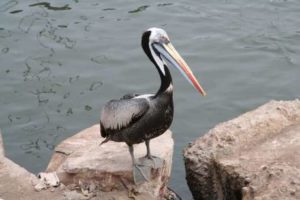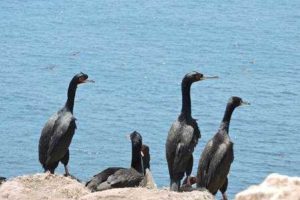Is This Organic Fertiliser An Alternative to Modern Artificial Fertiliser?
I am an independent horticulturist looking at more sustainable ways of growing crops, preserving them (post-harvest) & packing them.
I have been working with my partner on an organic fertiliser with a view to our bringing this product to the market for organic & conventional growers, home gardeners & allotment growers to use to add both organic matter & naturally derived nutrients to their soils.
Yes, we can all convert kitchen waste to compost or use bio-digestate & farmyard manure to increase organic matter. However, Guano, as it is called is derived from bird excrement, harvested by hand on specific Islands, Isles & Capes off the Peruvian Coast has some unique properties.
The unique Humboldt Current which flows off the cost of Peru offers unique conditions for plankton growth, which in turn results in large fish stocks (Anchovies) for deep sea fishing birds to feed on. This, along with the dry & permanent spring like climate of Peru means the guano can accumulate without being leached. The areas where the guano accumulates are designated wildlife sanctuaries, & the 4 or so species of deep-sea fishing birds who effectively make this product are protected by the Peruvian government as are the nesting sites where they breed.
The guano cannot be harvested during the breeding season & is only collected from each site every 4-7 years by hand, so as not to damage the delicate ecosystem.


The birds catch fish & digest it, bones & all, so it has a balanced NPK make up, is rich in calcium & has trace element content also.
A typical analysis is as follows:
| Macronutrients | ||
| Nutrient | Symbol | Typical analysis (%) |
| Nitrogen | N | 12-14% |
| Phosphorus | P2O5 | 12-14% |
| Potassium | K2O | 2-3% |
| Secondary Elements | ||
| Nutrient | Symbol | Typical analysis (%) |
| Calcium | CaO | 8-10% |
| Sulphur | S | 1.8% |
| Magnsium | MgO | 0.8% |
| Micronutrients | ||
| Nutrient | Symbol | Typical analysis (PPM or mg/kg) |
| Iron | Fe | 600ppm |
| Zinc | Zn | 170ppm |
| Boron | B | 180ppm |
| Molybdenum | Mo | 76ppm |
| Manganese | Mn | 48ppm |
| Copper | Cu | 23ppm |
| Other components: | ||
| Component | Typical analysis (%) | |
| Moisture | 16-18% | |
| Organic Matter | 19% | |
| Naturally occurring benefical micro-organisms | N/A |
The good news is that the population of sea birds which had declined from over 53 million in the 1880’s to just 4.3 million by 2011, has reached 5 million now & is growing by 100,000 a year, thanks to the conservation efforts in place in Peru.
Key species include Peruvian Pelican, Guanay Cormorant, White-Breasted Cormorant & Peruvian Booby:



So, what is the point of Guano?
Well, this fertiliser is 100% natural, it is sustainable & was one the key fertiliser in the EU & UK before artificially made fertilisers were developed. As the raw materials to make artificial fertilisers diminishes, & as we strive to reduce our carbon footprint, this material, like many others will increase in use again.
It should also be noted that it is the most complete Organic Fertilizer in the world and with the highest Value of
Organic Nitrogen (12-14%) there is no other that comes close to this value.
An important and unique property of Guano is that it is free of Bacteria like Salmonella and E. Coli, these Bacteria does not survive in Guano unlike other excrement-based fertilizers.
This makes an organic fertilizer very safe for use in green leaf crops that are eaten raw (like lettuce, arugula, pepper, celery and others). However, always wash your crops when grown in contact with soil before eating them as soils can contain other mico organisms which can cause food spoilage leading to food poisoning if eaten.
Guano has just had its UK organic status confirmed by Organic Farmers & Growers.
The product is being relaunched in the coming months & if you are interested to learn more about it & likely benefits it can have, please email “paul@pwhort.com” or call: +447470452007.
For commercial information, please contact Carlos: “carlos@anglo-peruvian.com”

